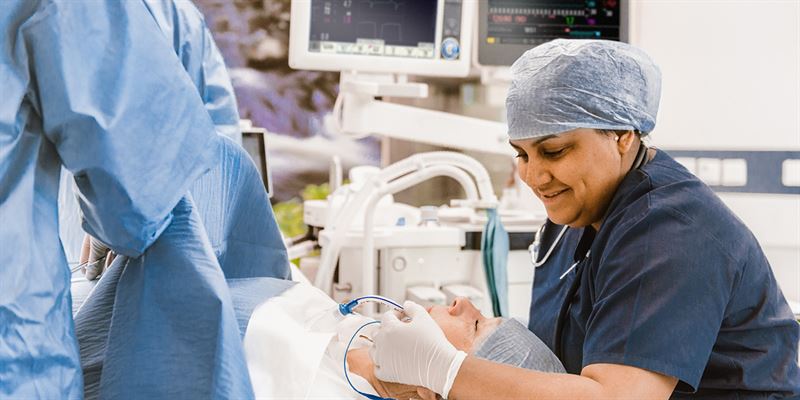New study shows Getinge innovation can help hospitals lower anesthetic waste by up to 58 percent
A newly released study in the Journal of Clinical Monitoring and Computing shows that the unique Automatic Gas Control (AGC) in Getinge’s anesthesia machine Flow-i, lowers sevoflurane wastage by up to 58 percent; a sustainable and economic approach without compromising patient safety.[1]

The climate challenges calls for actions from both individuals and organzations worldwide. For global medtech supplier Getinge, EcoDesign is used across all product development - an approach that benefits the environment as well as the customers’ economy. One of the areas where Getinge has made big progress in contributing to more sustainable health care is anesthesia.
“Global emissions of fluorinated volatile anaesthetics in 2014 equaled three million tons of CO2. Given the strong heat-trapping potency of volatile anaesthetics, anaesthetists have an important responsibility in this regard” 1, says Assoc. Prof. Alain Kalmar, Clinical anesthetist at AZ Sint-Jan Brugge-Oostende, Belgium, and one of the researchers behind the new study.
A few years back, Getinge launched a unique AGC technology for the Flow-i anesthesia machine to support anaesthetists further. When patients are at their most vulnerable, AGC brings visibility, control and precision to provide low- and minimal-flow anesthesia.2
“Safe, cost-effective and convenient, AGC is engineered to improve forecasting and control of anesthetic agents during the induction and emergence of anesthesia. Simple pre-settings gives high precision, improved comfort and increased safety. With minimal agent consumption hospitals can save costs and reduce the environmental footprint,” says Mikael Petrini, Global Clinical Application Specialist at Getinge.
The new study backs this up by indicating that the AGC technology permits very significant economic and ecological benefits, combined with excellent stability and convenience.1
“It is abundantly clear that on a hospital or society level the investment in automated systems generously pays off. On an ecological level, it should be emphasized that the patient receives the same level of anaesthesia, with even increased safety, but with a lower cost for both society and the biosphere,” says Assoc. Prof. Kalmar.
He continues:
“Based on our findings, we recommend that routine clinical practice using low flow anaesthesia should be abandoned, and that all anaesthesia machines are upgraded as soon as possible with automatic delivery technology.” 1
Access the full study “Minimizing sevoflurane wastage by sensible use of automated gas control technology in the Flow‑i workstation: an economic and ecological assessment” >>
Learn more about Getinge’s unique AGC technology >> and dynamic anesthesia solutions >>
References
1. Kalmar A. et al. Minimizing sevoflurane wastage by sensible use of automated gas control technology in the flow-i workstation: an economic and ecological assessment. J Clin Monit Comput. 2022 Jan 3. doi: 10.1007/s10877-021-00803-z.
2. Carette R, De Wolfe A.M, Hendrickx J.F.A. Automated gas control with the Maquet FLOW-i. J Clin Monit Comput. 2016 Jun;30(3):341-6.
Disclaimers
This document is intended to provide information to an international audience outside of the US. The views, opinions and assertions stated by the physician are strictly those of the physician and their practice and do not necessarily reflect the views of Maquet Critical Care. The products may be pending regulatory approvals to be marketed in your country. Contact your Getinge representative for more information.
© Maquet Critical Care AB 2022 · Maquet Flow-i and AGC are trademarks by Maquet Critical Care AB · Subject to modifications · MX-8554
Legal manufacturer: Maquet Critical Care AB · Röntgenvägen 2 SE-171 54 Solna · Sweden · +46 (0)10 335 73 00